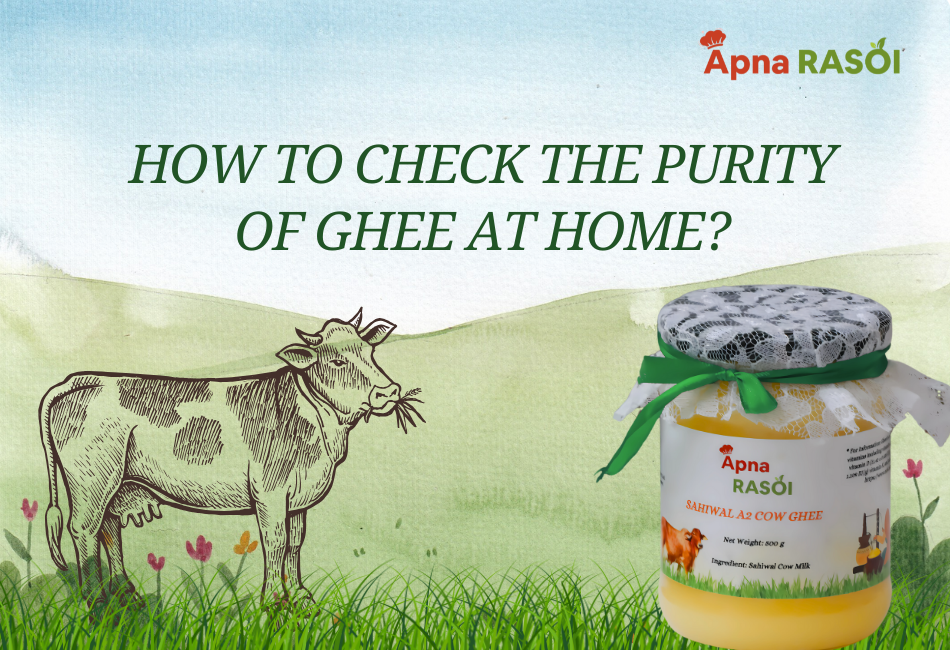
In today’s market, where adulteration is common, one of the most pressing consumer questions is: “How to check the purity of ghee at home?” With a flood of options labeled as pure organic ghee, desi cow ghee, or A2 ghee, how can you be sure what you’re consuming is genuinely unadulterated?
Thankfully, there are a few simple and effective home methods to check the purity of ghee – no lab required.
Pure ghee offers a host of health benefits – be it for heart health, digestion, or immunity. However, adulterated ghee made using vanaspati, starch, or even animal fats can do more harm than good. Hence, knowing how to identify pure ghee becomes essential for every household.
This is one of the most common answers to the question, “how to test pure ghee?”
Take one teaspoon of ghee and place it in a small glass container.
Put the container in the refrigerator for 10–15 minutes.
If the ghee solidifies uniformly and doesn’t separate into layers, it is pure desi cow ghee.
If you see different layers forming, it indicates the presence of other oils or vanaspati.
This is a basic but effective method to check the purity of ghee at home.
Another traditional technique to answer “how to check pure ghee?”
Take a small amount of ghee on your palm. If it starts melting quickly due to body temperature, it’s pure. Adulterated ghee won’t melt easily or might leave a greasy residue, suggesting the presence of synthetic fats.
Mix a small spoon of ghee with water in a glass jar and add a few drops of iodine.
If the mixture turns blue or black, it contains starch – meaning the ghee is not pure.
This test is great when you’re specifically asking how to check purity of ghee against starch adulteration.
Pure ghee, especially pure organic ghee or A2 desi ghee, has a rich aroma and nutty flavor.
If it smells plastic-like or overly artificial, it’s likely to be adulterated.
The best way to avoid these tests altogether is to buy ghee from certified sources. Look for brands that clearly mention A2 desi cow ghee, bilona method, or organic certification. Prefer ghee made from Gir cow milk or other indigenous breeds, as they usually ensure quality and authenticity.
So, if you’re wondering how to check the purity of ghee, remember that your kitchen already has the tools to do so.
From the freezer method to iodine tests, these simple steps can help you make sure your ghee is pure, organic, and health-friendly. Knowledge is your best weapon against food fraud – use it wisely!
Share this post:
Welcome to APNA RASOI, where you can get naturally created, delicious, and nutrient-dense food products. Your go-to place for freshly created, lovingly crafted food products.
We are so excited to share our love of organic and homemade food products with you, and we sincerely hope you enjoy every bite!
Copyright 2024© Apna Rasoi. All rights reserved.
